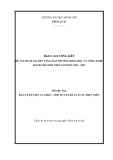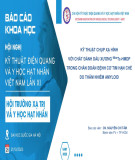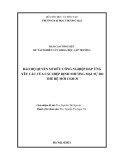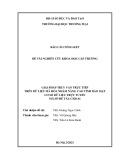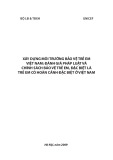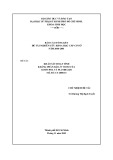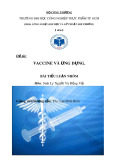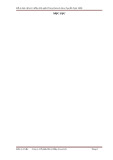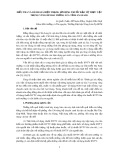
BioMed Central
Page 1 of 11
(page number not for citation purposes)
Journal of Translational Medicine
Open Access
Research
Implantation of neural stem cells embedded in hyaluronic acid and
collagen composite conduit promotes regeneration in a rabbit facial
nerve injury model
Han Zhang1, Yue Teng Wei2, Kam Sze Tsang3,4, Chong Ran Sun1,5, Jin Li1,3,4,
Hua Huang1, Fu Zhai Cui2 and Yi Hua An*1
Address: 1Beijing Neurosurgical Institute, Capital Medical University, Beijing, PR China, 2Department of Materials Science and Engineering,
Tsinghua University, Beijing, PR China, 3Department of Anatomical and Cellular Pathology, Chinese University of Hong Kong, Hong Kong, PR
China, 4Li Ka Shing Institute of Health Sciences, Chinese University of Hong Kong, Hong Kong, PR China and 5Department of Neurosurgery,
Second Affiliated Hospital of Zhejiang University Medical College, Hangzhou, PR China
Email: Han Zhang - meishazhang@yahoo.com.cn; Yue Teng Wei - yeting_smth@hotmail.com; Kam Sze Tsang - tsangks@cuhk.edu.hk;
Chong Ran Sun - sunfootprint@yahoo.com.cn; Jin Li - flintli@yahoo.com.cn; Hua Huang - ama_225@sina.com;
Fu Zhai Cui - cuifz@tsinghua.edu.cn; Yi Hua An* - riveran@163.com
* Corresponding author
Abstract
The implantation of neural stem cells (NSCs) in artificial scaffolds for peripheral nerve injuries
draws much attention. NSCs were ex-vivo expanded in hyaluronic acid (HA)-collagen composite
with neurotrophin-3, and BrdU-labeled NSCs conduit was implanted onto the ends of the
transected facial nerve of rabbits. Electromyography demonstrated a progressive decrease of
current threshold and increase of voltage amplitude in de-innervated rabbits after implantation for
one, four, eight and 12 weeks compared to readouts derived from animals prior to nerve
transection. The most remarkable improvement, observed using Electrophysiology, was of de-
innervated rabbits implanted with NSCs conduit as opposed to de-innervated counterparts with
and without the implantation of HA-collagen, NSCs and HA-collagen, and HA-collagen and
neurotrophin-3. Histological examination displayed no nerve fiber in tissue sections of de-
innervated rabbits. The arrangement and S-100 immunoreactivity of nerve fibers in the tissue
sections of normal rabbits and injured rabbits after implantation of NSCs scaffold for 12 weeks
were similar, whereas disorderly arranged minifascicles of various sizes were noted in the other
three arms. BrdU+ cells were detected at 12 weeks post-implantation. Data suggested that NSCs
embedded in HA-collagen biomaterial could facilitate re-innervations of damaged facial nerve and
the artificial conduit of NSCs might offer a potential treatment modality to peripheral nerve
injuries.
Background
With the advent of surgical techniques and instruments,
micro-sutures have considerably improved the manage-
ment of peripheral nerve injuries. Autograft of the epineu-
rium of an intact nerve remains to be the gold standard to
bridge a nerve gap defect for the peripheral nerve lesion
[23]. However, there are some limitations of the autolo-
gous nerve grafting technique including the limited
Published: 5 November 2008
Journal of Translational Medicine 2008, 6:67 doi:10.1186/1479-5876-6-67
Received: 18 May 2008
Accepted: 5 November 2008
This article is available from: http://www.translational-medicine.com/content/6/1/67
© 2008 Zhang et al; licensee BioMed Central Ltd.
This is an Open Access article distributed under the terms of the Creative Commons Attribution License (http://creativecommons.org/licenses/by/2.0),
which permits unrestricted use, distribution, and reproduction in any medium, provided the original work is properly cited.





